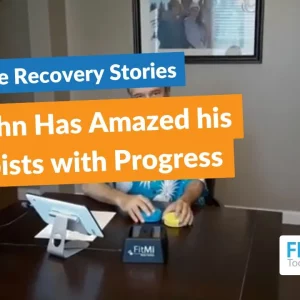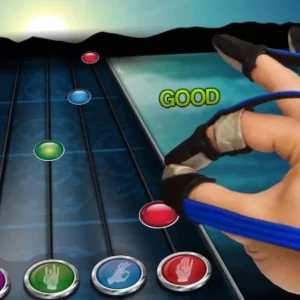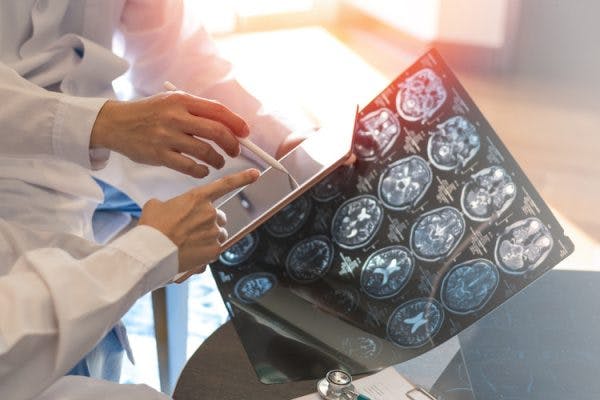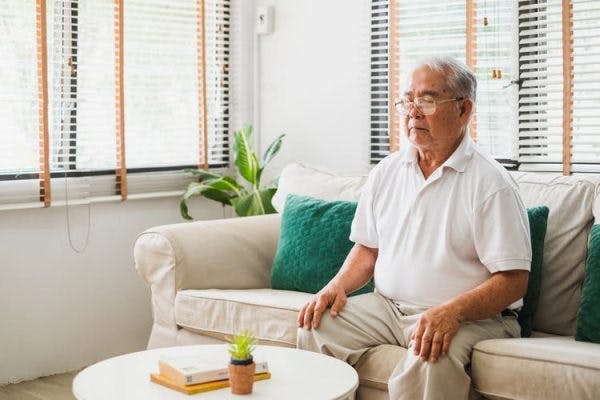The stroke recovery timeline is complex and unpredictable. This is because every stroke is different and can cause diverse secondary effects. Therefore, the rate of recovery is unique to everyone. Still, survivors and caregivers share a common question: How long does it take to recover from a stroke?
The bottom line is that this answer is complicated. However, there are some common trends in the stroke recovery timeline that are backed by current research. Although it’s impossible to tell exactly how long it takes to recover from a stroke, this article will provide an overview of some general recovery patterns and milestones.
Use the links below to jump straight to any section:
- How Long is the Stroke Recovery Timeline
- Factors That Impact Your Unique Stroke Recovery Time
- Rehabilitation Boosts Recovery Time
- Stroke Recovery Timeline Milestones
- Survivor Success Stories
- Stroke Recovery Takes Time
How Long is the Stroke Recovery Timeline?
A stroke occurs when the supply of blood in the brain is compromised. This can happen when an artery becomes blocked (called an ischemic stroke) or bursts (called a hemorrhagic stroke). When this happens, the affected area of the brain does not receive enough oxygen-rich blood. This leads to tissue damage and the loss of that area’s functions.
The longer the blood supply is compromised, the more tissue damage may occur. Therefore, swift treatment is essential to stop the stroke, restore blood flow in the brain, and save a life. It is important to familiarize yourself with the different stroke warning signs to promote timely treatment. The faster emergency care is received, the more the stroke can be controlled and injury to the brain can be minimized.
How long it takes to recover from a stroke depends on many different factors, such as the size and location of the stroke. The area of the brain affected will determine the specific secondary effects you will experience. Additionally, age and overall health before the stroke play a major role in recovery. As we mentioned before, the speed of treatment also affects a survivor’s recovery outlook.
The stroke recovery timeline lasts weeks, months, or, in many cases, years. Generally speaking, recovery tends to occur faster for minor strokes than for strokes that impact larger brain areas. However, it’s impossible to predict recovery with any certainty. For this reason, experts often say, “Every stroke is different, therefore every recovery will be different.” Let’s explore this further in the next section.
Factors That Impact Your Unique Stroke Recovery Time
If you’re eager to understand more about your potential stroke recovery timeline, there are two factors worth digging into: the size and location of the stroke. Regarding size, if a stroke is mild, the brain damage may be minimal. When tissue damage is minimal, recovery often occurs faster.
When a stroke is considered massive, which is often measured by a high score on the NIH Stroke Scale, recovery may take longer. This is because a larger stroke is generally accompanied by greater secondary effects. In many cases, recovery from a massive stroke will require survivors to participate in intensive rehabilitation to regain function.
Regarding location, a stroke can affect many different areas of the brain. This complicates estimating the stroke recovery timeline because different areas of the brain control different functions. Depending on the area of the brain that was impacted, the secondary effects will vary. This can include motor, sensory, and cognitive effects, and some effects are easier to overcome than others.
For instance, a stroke in the left hemisphere of the brain may impair a survivor’s language. This is because the language center is in the brain’s left hemisphere in most individuals. For example, a stroke in the left temporal lobe may cause a language disorder such as aphasia. On the other hand, an individual with a right hemisphere stroke may have completely different secondary effects.
As you can imagine, the differences in the size and location of a stroke have profound implications on every survivor’s stroke recovery timeline. However, other factors impact the speed of recovery. We mentioned earlier that age and overall health before the stroke influence recovery. Generally speaking, the younger you are and the healthier and more active you were before your stroke, the faster your recovery may be.
Rehabilitation Boosts the Recovery Timeline
Perhaps the most important controllable factor that impacts your stroke recovery timeline is dedicated rehabilitation. The more you participate in your prescribed therapy exercises, the greater recovery potential you can have. Failure to participate in rehab can slow the recovery timeline after stroke and result in poorer outcomes.
One study found that survivors demonstrated the same functional abilities at 5 years post-stroke as they did 2 months post-stroke. Researchers attributed this poor outcome to the lack of long-term rehab after the initial rehabilitation period. This demonstrates the importance of staying consistent with your therapy program. With time and dedication, you can continue to see gradual improvements in function. This is just as true for those 5-years into the stroke recovery timeline as those in the beginning stages.
Rehabilitation after stroke generally consists of multiple therapy disciplines. Generally, survivors will work with physical therapists, occupational therapists, and speech therapists, among other professionals. These experts will help pinpoint your exact needs and create a program that helps you reach your post-stroke goals. As you proceed with recovery and rehabilitation, it can help to understand what to expect and what milestones may occur.
Stroke Recovery Timeline Milestones
As we look at different recovery milestones after stroke, it is important to remember that every timeline will look different. For instance, even when two individuals experience strokes in the same area of the brain, recovery time will still vary. One left hemisphere stroke survivor may struggle with not being able to speak at all, while another may struggle only with word retrieval. Recovery time for these two survivors will likely be very different.
With that said, it can be helpful to understand some stroke recovery timeline patterns. In addition to the Brunnstrom stages of stroke recovery, there are general milestones that are often seen during rehabilitation. Let’s review these now so you know what you can expect on the road to recovery.
Day 1: The Stroke is Treated
A stroke is a medical emergency. As time goes on without intervention, more brain cells are deprived of oxygen-rich blood, leading to tissue damage. Therefore, swift treatment is necessary to stop the stroke’s progression and minimize negative secondary effects.
Initially, you will likely be admitted to an emergency department to stabilize your condition. Once the type of stroke (ischemic vs. hemorrhagic) is identified, treatment can be administered. This may include clot-dissolving drugs or, in some cases, surgical intervention. If surgery is required, your initial recovery time may be longer.
Once the stroke has been treated, rehabilitation begins immediately. This typically means starting rehab right from the hospital bed. Early mobility helps minimize the muscle atrophy that is common from being in the hospital. Beginning rehabilitation right away helps take advantage of the brain’s heightened state of neuroplasticity.
Neuroplasticity refers to the brain’s ability to heal and rewire itself. This mechanism allows healthy parts of the brain to take over the functions that were lost due to the stroke. Recovery after stroke revolves around this process, which is why the practice of rehab exercises is so important. The more you practice a skill, the more efficient that skill can become.
In the early stages of recovery, many survivors experience spontaneous recovery of function. This refers to improvements that occur suddenly, often during the early stages of recovery. This is because the first weeks and months after stroke are when the brain is rapidly trying to heal from injury and neuroplasticity is most active.
Week 1-3: Discharge from the Hospital
Depending on the severity of your stroke and how many medical complications occur, you will likely be in the acute care hospital for 1-3 weeks. During your time in the hospital, you will work with a robust team of experts who will assess your condition. Your medical team can help identify any secondary effects that you may have sustained, such as physical or cognitive impairments.
Your medical team will also pay close attention to your abilities and help determine whether you can care for yourself independently. This includes the activities of daily living, such as using the toilet, dressing, and walking short distances. Then, before you leave the hospital, your rehab team will help create a rehabilitation plan for you. This plan will include suggestions for the next step in rehabilitation and your care moving forward.
Post-Acute Rehabilitation Options
Based on your unique needs and abilities, you might continue with the following types of rehabilitation after discharge from the hospital:
- Inpatient rehabilitation: If you can benefit from participating in 3 hours of therapy per day, you may continue recovery at an inpatient rehabilitation facility. To be accepted into one of these facilities, you need to have significant functional deficits and show potential for improvement. Additionally, you must have assistance at discharge should you need it.
- Subacute rehabilitation: If you require a lower level of therapy with 1-2 hours of therapy daily, you may continue recovery at a subacute rehab facility. This would involve something like a skilled nursing facility.
- Outpatient therapy: After discharge from the hospital or rehab facility, many patients continue with therapy by visiting an outpatient clinic as needed. If you are more mobile or have assistance at home, this can be a great option.
- Home health: If you are being discharged home but are unable to leave the home due to mobility difficulties, home health may be a great choice. This service involves therapists and nurses coming into your own home to provide health care and caregiver training.
1-3 Months: Notable Recovery Should Occur
During the first 3 months of stroke recovery, you should see notable improvements in your progress. The brain is still in a state of heightened plasticity, which means that rehabilitation has a bigger effect during this time. Spontaneous recovery is also common during this early window. One of the greatest ways to capitalize on this period of fast improvement is by participating in inpatient therapy.
After the first 3 months in your stroke recovery timeline, results often slow down and many survivors experience a plateau in progress. At this point, most survivors are back at home continuing recovery on their own or in outpatient therapy. This plateau or slowing of progress can be discouraging for survivors and reduce motivation to continue with therapy.
Fortunately, even though the plateau may slow things down, it does not mean that recovery is over. Recovery can continue for many years if you continue with dedicated rehabilitation. Occasional regressions in progress are a normal part of the stroke recovery timeline and progress can still be made. For this reason, survivors should continue with physical therapy, occupational therapy, and speech therapy for as long as necessary to regain lost skills.
It is also important to stay active at home between outpatient therapy sessions. Massed practice or high repetition of home exercises will provide the brain with the consistent stimulation needed to rewire itself. Home therapy programs such as Flint Rehab’s FitMi are designed to help with this. When survivors use the home exercise system regularly, they often see rapid results because the brain has the stimulation it needs to heal.
Want 25 pages of stroke recovery exercises in a PDF? Click here to download our free Stroke Rehab Exercise ebook now (link opens a pop up for uninterrupted reading)
6 Months: Gait Improves in Most Stroke Survivors
As your stroke recovery timeline progresses, you will hit your unique milestones in your own time. One popular milestone many survivors look forward to is regaining the ability to walk. For many, hemiplegia or hemiparesis (paralysis or weakness of one side) can affect walking and overall mobility. Fortunately, if you participate in regular rehabilitation, the outlook is positive by the 6-month mark.
In one study, around 60% of survivors who were non-ambulatory and participated in inpatient rehabilitation were able to walk at the 6-month mark. This is an encouraging statistic that shows the brain’s resilience. For those recovering from smaller strokes with less severe effects, the recovery of walking may be quicker.
It’s important to note that spontaneous recovery has likely slowed by this point. To keep seeing results, it’s imperative to participate in a regular rehabilitation program. While progress may be slower, functional recovery is possible for a lifetime. If you continue with dedicated rehabilitation, you can keep making progress toward your recovery goals.
1 Year: Recovery Looks Increasingly Different for Everyone
At the 1-year mark, it’s impossible to say where any single survivor will be on their recovery journey. Some might have fully recovered function while others are still pursuing rehabilitation. What we do know is that survivors can continue making detectable improvements in function between 6 months and 1 year, and beyond.
One recent study found continued improvements in survivors’ motor function and self-reported health 1 year after inpatient rehabilitation. Another study reported that over 50% of stroke survivors were able to recover the capacity to perform the activities of daily living. Additionally, while early intervention is crucial for those affected by aphasia, recovery can still be observed well after the 6-month mark. These are all great reasons to keep participating in rehabilitation after 1 year.
5 Years and Beyond: Functional Recovery Can Continue
As the years go by, recovery continues to look different for everyone. It all depends on your unique secondary effects and how consistently you participate in rehabilitation. Although functional improvements may come slowly at this point in the stroke recovery timeline, it is still possible to improve your daily life.
There is documented proof of chronic stroke recovery as many as 23 years after the initial stroke. If you want to keep seeing results for the months and years after stroke, you must continue with rehabilitation well after discharge from inpatient rehab. This is where home therapy programs can help, especially since insurance may not cover formal therapies this far removed from the stroke.
In addition to participation in rehab exercise, it is important to create healthy daily habits to optimize your overall wellness. Prioritizing sleep, getting daily exercise, and maintaining a healthy diet can boost your recovery. Additionally, practicing these healthy habits can help reduce your risk of a second stroke. Up next, we will highlight a few success stories of stroke survivors working toward recovery.
Survivor Success Stories
It’s worth repeating that every stroke is different and therefore every recovery is different. Where one survivor is at the 5-year mark will differ greatly from others. Some find it incredibly helpful to join a stroke support group and gain encouragement and motivation from fellow survivors. It can be motivating to see how others are doing at different moments in their own unique stroke recovery timelines.
Below are some great examples of survivors pushing for recovery years after stroke. These are videos from our very own FitMi home therapy users, who submitted videos to help others see how much they have progressed:
Anthony: 1 Year Post-Stroke
Meet Anthony, who experienced left-side paralysis (hemiplegia) after his stroke. He started using FitMi as his home exercise program after 3 months and has continued to improve. He still struggles with hand mobility, which can often take longer to recover than the arm or leg. Nevertheless, hand function can continue to improve with consistent rehabilitation.
Mary: 2 Years Post-Stroke
Meet Mary, a stroke survivor who was in a coma for 5 weeks after her stroke. She is an example of outstanding recovery, even when her situation seemed grim in the early stages. Mary experienced right-side paralysis and participated in inpatient rehab for another 5 weeks. After two years, she felt like she reached a plateau, but broke through it by pursuing a consistent home exercise program.
Carol: 3.5 Years Post-Stroke
Meet Carolyn, a stroke survivor who overcame right-side paralysis. After discharge from inpatient rehabilitation, she used FitMi home therapy to keep improving at home. Now she can drive, ride her bike, and travel with confidence.
Becky: 11 Years Post-Stroke
Meet Becky, a brain stem stroke survivor who is going on 11 years of recovery at the time of the video. Brain stem strokes can lead to a condition called locked-in syndrome where the person becomes effectively paralyzed except for the eyes. Becky has come a long way to overcome paralysis and regain mobility. She is living proof of what’s possible with dedication to an intensive rehab program.
Stroke Recovery Takes Time
Since there is no cookie-cutter approach to rehabilitation, every stroke recovery timeline will look different. While there are some general timeframes and milestones, every recovery journey depends on the survivor’s unique circumstances. You will likely see the fastest gains in function in the first 6 months of recovery. However, we know that recovery can continue years after the initial stroke.
Your unique stroke recovery timeline is influenced by some factors that you cannot control, such as your age and the size and location of your stroke. However, there are many factors that you can control, like how often you participate in rehab at home. Ultimately, the most progress occurs for survivors who believe in themselves and pursue rehabilitation consistently. Your brain needs your help to rewire itself and regain lost abilities.
While progress will likely slow as time progresses, there is always the potential for improvement. Even those in the chronic stage of recovery can see gains in function with consistent therapy exercise. Work closely with your therapy team to create a program that is engaging and helps you reach your individual goals. We hope this article has provided the insight and hope you need to keep pursuing recovery, no matter where you are in the stroke recovery timeline.










